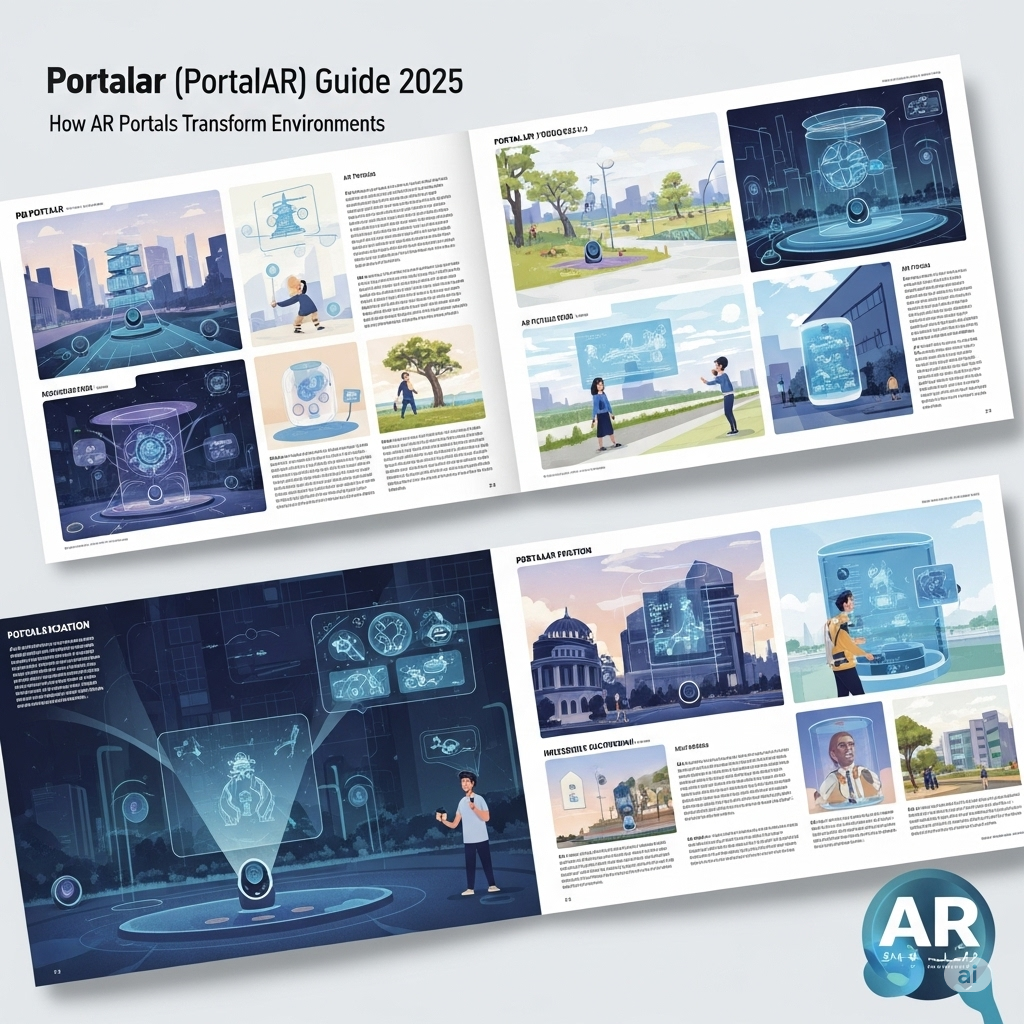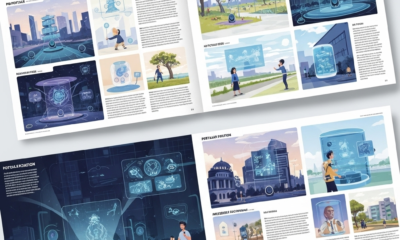Tech
Advanced Financial Reporting Techniques

Beyond the basics of financial accounting, advanced training delves into sophisticated reporting techniques essential for accounts assistants aiming to excel in their roles. These techniques go beyond the standard financial statements and encompass advanced topics such as consolidated financial statements, segment reporting, and accounting for mergers and acquisitions.
Understanding consolidated financial statements is crucial for accounts assistants working in multinational corporations or conglomerates. These statements consolidate the financial results of multiple entities within a group, providing stakeholders with a comprehensive view of the group’s financial performance and position. Training in this area covers topics such as equity method accounting, non-controlling interests, and intercompany transactions, enabling accounts assistants to navigate complex consolidation processes with ease.
Segment reporting is another advanced reporting technique that accounts assistants may encounter in their roles. Segment reporting involves disclosing financial information about different segments or business units of an organization, allowing stakeholders to evaluate the performance and profitability of each segment independently. Training in segment reporting equips accounts assistants with the knowledge and skills to identify reportable segments, allocate shared expenses, and prepare segment disclosures in compliance with accounting standards.
Additionally, accounts assistants may receive training on accounting for mergers and acquisitions (M&A), which involves complex accounting treatments and financial reporting requirements. In M&A transactions, accounts assistants play a crucial role in assessing the fair value of acquired assets and liabilities, determining goodwill or bargain purchase gain, and preparing the necessary disclosures in the financial statements. Training in this area covers topics such as purchase price allocation, contingent consideration, and business combination accounting standards, ensuring accounts assistants can navigate M&A transactions effectively.
Specialized Industry Knowledge
In addition to general accounting principles, training programs may offer specialized knowledge tailored to specific industries. Accounts assistants working in healthcare, manufacturing, hospitality, or other specialized sectors may benefit from training on industry-specific regulations, accounting practices, and reporting requirements.
For example, accounts assistants in the healthcare industry may receive training on healthcare-specific accounting standards such as ASC 606 (Revenue from Contracts with Customers) and ASC 842 (Leases). They may also learn about unique healthcare reimbursement methodologies, regulatory compliance requirements such as HIPAA (Health Insurance Portability and Accountability Act), and financial reporting considerations for healthcare organizations.
Similarly, accounts assistants in the manufacturing industry may receive training on cost accounting principles, inventory valuation methods, and production cost analysis. They may also learn about industry-specific regulations such as International Financial Reporting Standards (IFRS) for inventory valuation and reporting requirements for capital expenditures.
In the hospitality industry, accounts assistants may receive training on revenue recognition principles for hotel bookings, food and beverage sales, and ancillary services. They may also learn about industry-specific performance metrics such as average daily rate (ADR), revenue per available room (RevPAR), and occupancy rate, which are essential for financial analysis and reporting in the hospitality sector.
By gaining specialized industry knowledge through training, accounts assistants can better understand the unique financial challenges and opportunities within their respective industries. This enables them to provide more tailored financial support and analysis to their organizations, ultimately contributing to better decision-making and performance.
Audit and Assurance Skills
Understanding auditing principles and practices is essential for accounts assistants involved in internal or external audit processes. Training in audit and assurance covers topics such as risk assessment, audit planning, and audit evidence evaluation, preparing accounts assistants to support audit activities effectively.
In internal audit roles, accounts assistants may assist in conducting risk assessments to identify areas of potential financial risk or control weaknesses within the organization. They may also participate in audit planning activities, including developing audit programs, identifying key controls, and determining sampling methods for testing.
During the audit fieldwork phase, accounts assistants may be responsible for gathering audit evidence, performing audit procedures, and documenting their findings. This requires attention to detail, analytical skills, and adherence to professional auditing standards. Training in audit procedures equips accounts assistants with the necessary knowledge and skills to conduct audit tests accurately and efficiently.
In external audit roles, accounts assistants may support external auditors in conducting financial statement audits, reviews, or compilations for clients. This involves understanding auditing standards such as Generally Accepted Auditing Standards (GAAS) or International Standards on Auditing (ISA) and applying them to assess the fairness and reliability of financial statements.
Accounts assistants may also assist in preparing audit documentation, responding to auditor inquiries, and addressing audit findings or recommendations. Training in audit and assurance ensures accounts assistants understand their roles and responsibilities in the audit process and can contribute effectively to the audit engagement.
Financial Planning and Analysis
Many training programs include modules on financial planning and analysis (FP&A), which focus on forecasting, budgeting, and financial modeling. FP&A skills are essential for accounts assistants seeking to support strategic decision-making and financial management within their organizations.
Financial forecasting involves predicting future financial performance based on historical data, market trends, and business assumptions. Accounts assistants learn to develop financial models, analyze historical trends, and incorporate assumptions to forecast revenues, expenses, and cash flows accurately. These forecasts enable organizations to anticipate future financial needs, evaluate investment opportunities, and set realistic financial goals.
Budgeting is the process of allocating resources to different activities or departments within an organization to achieve strategic objectives. Accounts assistants play a vital role in budget preparation, monitoring budget performance, and variance analysis. They collaborate with department heads, analyze budget variances, and provide insights to management on areas of overspending or cost-saving opportunities.
Financial modeling involves creating mathematical representations of financial scenarios to evaluate the impact of different variables on financial outcomes. Accounts assistants learn to build financial models using spreadsheet software such as Microsoft Excel, incorporating inputs such as revenue projections, expense forecasts, and capital expenditures. These models enable organizations to assess the financial feasibility of investment projects, mergers and acquisitions, or strategic initiatives.
By mastering financial planning and analysis techniques, accounts assistants can provide valuable support to decision-makers within their organizations. They can help management evaluate business performance, identify opportunities for growth or cost savings, and develop strategies to achieve financial objectives.
Leadership and Management Skills
As accounts assistants progress in their careers, they may transition into leadership or management roles where they are responsible for supervising teams, managing projects, and driving organizational change. Training in leadership and management equips them with essential skills such as team building, conflict resolution, and strategic thinking.
Effective team building is essential for creating a cohesive and motivated workforce. Accounts assistants learn to build and nurture high-performing teams by fostering open communication, encouraging collaboration, and recognizing individual contributions. They also learn to delegate tasks, empower team members, and provide constructive feedback to support professional development and growth.
Conflict resolution skills are crucial for handling disagreements or disputes that may arise within teams or between individuals. Accounts assistants learn to identify the root causes of conflicts, facilitate constructive dialogue, and negotiate mutually beneficial solutions. By resolving conflicts effectively, they can maintain positive working relationships and minimize disruptions to productivity and morale.
Strategic thinking involves analyzing complex problems, evaluating alternative solutions, and making informed decisions to achieve organizational goals. Accounts assistants learn to think critically, anticipate future challenges, and identify opportunities for innovation and improvement. They also learn to align their actions with the organization’s strategic objectives, ensuring their efforts contribute to long-term success.
By developing leadership and management skills through training, accounts assistants can prepare themselves for roles with greater responsibility and authority within their organizations. They can effectively lead teams, manage projects, and drive organizational change, contributing to improved performance, employee engagement and organizational success.
Continuous Professional Development
The field of finance is dynamic and constantly evolving, with new regulations, technologies, and best practices emerging regularly. Accounts Assistant Training emphasizes the importance of continuous professional development (CPD) to stay abreast of industry trends and advancements. CPD activities may include attending seminars, earning certifications, or participating in online courses to expand knowledge and skills.
CPD allows accounts assistants to stay updated on the latest developments in finance, such as changes in accounting standards, regulatory requirements, or technological innovations. By investing in CPD, accounts assistants demonstrate their commitment to professional growth and excellence, positioning themselves as valuable assets to their organizations.
Continuous learning also enables accounts assistants to adapt to changing business environments and market conditions. Whether it’s mastering new accounting software, understanding emerging financial technologies, or navigating regulatory changes, CPD equips accounts assistants with the knowledge and skills to stay ahead of the curve.
Furthermore, CPD fosters a culture of innovation and continuous improvement within organizations. By encouraging employees to pursue learning opportunities and stay updated on industry developments, organizations can drive innovation, enhance competitiveness, and foster a culture of excellence.
Ethical Decision-Making
Ethical conduct is fundamental to maintaining trust and integrity in the finance profession. Training programs often include modules on ethical decision-making, emphasizing the importance of honesty, integrity, and transparency in financial reporting and business practices.
Accounts assistants learn to identify ethical dilemmas that may arise in their roles, such as conflicts of interest, financial fraud, or confidentiality breaches. They develop the skills to assess the ethical implications of different courses of action, considering factors such as fairness, honesty, and respect for stakeholders’ interests.
In addition to ethical awareness, accounts assistants learn about professional codes of conduct and ethical standards established by organizations such as the American Institute of Certified Public Accountants (AICPA) or the Institute of Management Accountants (IMA). These standards provide guidance on ethical behavior, integrity, and professionalism in the finance profession.
By emphasizing ethical decision-making in training, accounts assistants are better equipped to uphold the highest standards of integrity and professionalism in their roles. They understand the importance of ethical conduct in maintaining public trust, protecting organizational reputation, and ensuring compliance with legal and regulatory requirements.
Cloud accounting refers to the use of cloud-based software for financial management, such as cloud-based accounting software like Xero or QuickBooks Online.
Technological Proficiency
With the increasing integration of technology in finance, accounts assistants must stay updated on the latest tools and software. Training in technological proficiency covers areas such as data analytics, cloud accounting, and automation, enabling accounts assistants to leverage technology effectively in their roles.
Data analytics skills are essential for accounts assistants to analyze financial data, identify trends, and extract actionable insights. Training in data analytics equips them with the knowledge and tools to use data visualization techniques, statistical analysis software, and predictive modeling to support decision-making and financial analysis.
Cloud accounting refers to the use of cloud-based software for financial management, such as cloud-based accounting systems like QuickBooks Online or Xero. Training in cloud accounting familiarizes accounts assistants with the features and functionalities of cloud-based software, enabling them to access financial data securely from anywhere, collaborate with team members in real-time, and streamline financial processes.
Automation involves using software or technology to automate repetitive tasks and streamline workflows. Training in automation introduces accounts assistants to robotic process automation (RPA), workflow automation tools, and scripting languages such as Python or VBA (Visual Basic for Applications). By automating manual tasks such as data entry, reconciliation, or report generation, accounts assistants can improve efficiency, accuracy, and productivity in their roles.
By mastering technological proficiency through training, accounts assistants can leverage technology to streamline financial processes, improve decision-making, and drive innovation in their organizations. They can adapt to technological advancements, stay competitive in the digital age, and contribute to organizational success.
Conclusion
In conclusion, Accounts Assistant Training encompasses a diverse range of topics and skills essential for success in the field of finance. From advanced financial reporting techniques to specialized industry knowledge, leadership skills, and technological proficiency, comprehensive training programs prepare accounts assistants to excel in their roles and contribute to organizational success.
By investing in Accounts Assistant Training, organizations can empower their employees to achieve excellence, drive innovation, and maintain a competitive edge in today’s dynamic business environment. Whether it’s through formal education, professional certifications, or continuous professional development, training equips accounts assistants with the knowledge, skills, and confidence to navigate the complexities of the finance profession with proficiency and integrity.
Tech
What is Janitor AI? Features, Use Cases & How to Use It Safely in 2025

📝 Introduction
Artificial intelligence is rapidly transforming how we interact online, and Janitor AI is one of the most buzzed-about names in the chatbot space—especially for users looking for customizable, conversational, and even NSFW AI interactions.
Whether you’re exploring it for entertainment, roleplay, or productivity, this guide covers everything you need to know about Janitor AI in 2025—from how it works, its features, limitations, and even the controversy surrounding it. If you’re curious, cautious, or ready to dive in, this is your ultimate reference.
🤖 What is Janitor AI?
Janitor AI is an advanced AI chatbot platform that allows users to interact with a variety of characters—ranging from anime-style bots to customizable virtual personalities. Unlike traditional AI chat tools, Janitor AI focuses heavily on character roleplay, storytelling, and human-like interaction.
Many users have been drawn to the platform due to its allowance (at times) for NSFW (Not Safe For Work) conversations, making it popular among adult users. However, its capabilities extend beyond that.
🔹 Key Features:
-
Character-based AI chats (custom bots)
-
NSFW and SFW modes (optional)
-
GPT-based responses (OpenAI or Kobold API supported)
-
Voice synthesis (in some versions)
-
Public character library
📌 Janitor AI Use Cases in 2025
Despite the controversy, Janitor AI is being used for several legitimate and interesting purposes:
1. Roleplay & Storytelling
Writers and fans use the platform for:
-
World-building
-
Character interaction testing
-
Generating dialogues for scripts and comics
2. Entertainment & Fun
-
Anime fan chats
-
Simulated romantic convos
-
Gaming companion bots
3. Mental Health & Venting
Some users engage with soft-spoken bots to:
-
Simulate therapy
-
Talk out problems
-
Seek non-judgmental conversation
4. Productivity Simulation
-
Practice job interviews
-
Language learning through simulated chats
-
Train customer service interactions
🛠️ How Janitor AI Works
Janitor AI is not powered by its own LLM (Large Language Model). Instead, it connects with external APIs like:
-
OpenAI (ChatGPT) – for safe, filtered interactions
-
KoboldAI or Pygmalion – for unfiltered/NSFW content
-
Local Models (e.g., SillyTavern) – for privacy-focused chats
To use Janitor AI:
-
Sign up and login at [janitorai.com] [EXTERNAL LINK]
-
Choose a character from the public library or create your own.
-
Connect an API key (OpenAI or KoboldAI).
-
Start chatting with the bot of your choice.
⚠️ Note: You must configure API settings correctly. Many users get errors if APIs are not linked.
🚫 NSFW & Content Safety: The Big Debate
One of the reasons Janitor AI became viral is because it allowed NSFW chats, especially using Pygmalion or OpenRouter APIs.
However, this has sparked massive debates online, especially around:
-
AI ethics
-
Age restrictions
-
Content moderation
In 2024-2025, Janitor AI removed direct NSFW support on its main platform, but users still bypass this using external APIs or local installations.
🔒 Tips for Safe Use:
-
Use a local model if privacy is a concern.
-
Never share real personal data.
-
Check if the bot creator has moderation settings enabled.
-
Keep SFW mode on if under 18 or in public/shared devices.
📈 Why Janitor AI is So Popular in 2025
| Reason | Description |
|---|---|
| Customizable Bots | Create your own characters with unique personalities |
| Roleplay Freedom | Many bots simulate romantic or fantasy dialogues |
| Easy to Use | No coding needed, simple UI |
| Cross-Platform | Use in browser, Discord bots, or third-party apps |
| Large Community | Public bots, shared prompts, guides available |
🔄 Janitor AI Alternatives (2025)
If Janitor AI doesn’t suit your needs, here are some trending alternatives:
1. Character.AI
-
Family-friendly
-
No NSFW content
-
Great UI & mobile app
2. Chai App
-
Available on Android & iOS
-
Tons of user-generated bots
-
Less control over filtering
3. Pygmalion AI + SillyTavern
-
Fully unfiltered
-
Requires setup
-
Works offline with local LLMs
4. OpenAI Playground (ChatGPT)
-
Reliable for clean conversations
-
Limited in roleplay compared to Janitor
📌 For a comparison article, see: [Janitor AI vs Character AI – Which is Better?] [INTERNAL LINK]
💻 Developer & Community Tools
If you’re a developer or enthusiast, Janitor AI allows:
-
Bot creation: Customize prompts, memories, behavior.
-
API linking: Choose your preferred backend model.
-
Community uploads: Share your bot with others.
-
Third-party mods: Chrome extensions, Discord integrations
Some devs even run private versions of Janitor AI using open-source tools like:
-
JanitorAI-Local
-
Sillytavern UI
-
KoboldCPP
✅ Pros and Cons
| Pros | Cons |
|---|---|
| Deep roleplay capabilities | May violate ethical/age guidelines |
| Supports multiple AI backends | Complex setup for unfiltered APIs |
| Active community & support | NSFW misuse concerns |
| Free to use (with API) | Not beginner-friendly without guides |
📌 Conclusion (with Links Added)
Janitor AI is much more than just another chatbot it’s a powerful, flexible platform for those looking to dive into immersive conversations with fictional, realistic, or AI-generated characters. Whether you’re writing a fantasy novel, simulating a companion, or just killing time, it opens up countless possibilities.
But with great flexibility comes responsibility. Use Janitor AI ethically, protect your privacy, and respect the boundaries of content guidelines.
Want to explore more ways to leverage AI? Check out our guide on
👉 How to Make Money with ChatGPT in 2025 – 10 Proven Methods
Or visit our homepage for more trending AI tools, tech updates, and tutorials:
🌐 SpaceCoastDaily.co.uk
❓ FAQ – Janitor AI 2025
Q1: Is Janitor AI free to use?
Yes, the platform is free, but you’ll need to connect your own API key (like OpenAI, Kobold, or Pygmalion).
Q2: Is NSFW content still available?
Officially, NSFW content is restricted. However, users can still access it via third-party APIs or local setups.
Q3: Is Janitor AI safe?
It’s generally safe if you use trusted APIs and don’t share personal info. For NSFW use, caution is advised.
Q4: Can I use it without coding?
Yes, Janitor AI has a user-friendly interface. You only need to copy-paste API keys.
Q5: What is the best API for Janitor AI?
For filtered, ethical use: OpenAI. For unfiltered creative freedom: KoboldAI or Pygmalion.
Tech
Portalar (PortalAR) Guide 2025: How AR Portals Transform Environments

📝 Introduction
Imagine stepping through a glowing doorway and instantly finding yourself in a lush rainforest, a futuristic city, or another dimension entirely—all through your smartphone screen. That’s exactly the magic behind Portalar (PortalAR), an augmented reality concept that blends real-world environments with immersive virtual spaces.
In this article, we’ll explore what Portalar is, why it’s a game-changer in AR, and how you can create your own interactive portals. Whether you’re a developer, a creative enthusiast, or simply curious, this guide will take you through the world of AR portals step by step.
🌟 What is Portalar (PortalAR)?
Portalar, also known as PortalAR, is a concept where users create and interact with digital “portals” in real-world spaces using AR technology. These portals serve as gateways to different virtual environments. Inspired by filters like Snapchat’s Stranger Things portal and innovative apps like Rainforest Garage, this concept allows for:
-
Multi-environment interaction: Users can walk through multiple themed AR spaces.
-
Creative exploration: Each portal is a personalized or interactive experience.
-
Immersive storytelling: Great for gaming, education, and entertainment linkedin.com+4medium.com+4medium.com+4.
🔍 Why Build a Portalar App?
1. Skill Development
Building Portalar helps developers grow in AR, UX, and 3D modeling—essential for careers in emerging tech .
2. Rising Market Demand
With major players like Apple, Meta, and Google investing heavily in AR, early innovation in portals positions you ahead in the next tech wave .
3. Diverse Applications
Use cases range from educational experiences and virtual tourism to immersive marketing and gaming demos—opening doors to various industries.
🛠️ How to Create Your Own Portalar Experience
Follow this roadmap to start building AR portals:
Step 1: Choose Your AR Platform
Select an AR SDK like ARKit, ARCore, or a cross‑platform engine such as Unity or Unreal Engine.
Step 2: Define the Portal Frame
Design visual anchors (rings, doors, frames) to mark the entry to your virtual world.
Step 3: Build the Virtual Environments
Model vivid environments—like rainforests or sci‑fi worlds. Use tools such as Blender or Maya for 3D assets.
Step 4: Track Real‑World Positioning
Use plane detection and tracking features to anchor portals in physical spaces.
Step 5: Manage Scene Transitions
Implement smooth transitions (e.g. fade, pop) when users walk “through” the portal.
Step 6: Add Interactive Elements
Include sounds, animations, and generated events to make the portal environment engaging.
Step 7: Optimize for Performance
Ensure smooth frame rates and low latency for a seamless AR experience.
🕹️ Use Cases & Example Apps
-
Inspiration: Snapchat’s Stranger Things Portal – A well-known example of AR portal technology medium.com+1medium.com+1
-
Rainforest Garage by 8ninths – Letting users build and walk through personalized rainforest scenes medium.com
-
Educational Portals – Historical simulations, molecular walkthroughs, or space exploration zones
-
Virtual Tourism – Stand in your living room and instantly be on a tropical beach or city landmark
-
Marketing & Demos – Brands using portals to create immersive product showcases
🎯 Best Practices for Effective Portalar Design
-
Intuitive Portal Anchor – Make the portal visually compelling and recognizable.
-
Contextual Awareness – Portals should adapt to real-world lighting and surfaces.
-
Seamless Transitions – Use polished effects for entering and exiting portals.
-
Performance Prioritized – Test on multiple devices to eliminate lag.
-
Interactive Depth – Add depth through collectibles, audio triggers, or physics-based interactions.
✅ Pros & Challenges of Portalar
| Pros | Challenges |
|---|---|
| Highly immersive & memorable experience | Requires advanced AR and 3D skills |
| Versatile applications across industries | Performance issues on older devices |
| Enhances user engagement dramatically | Needs realistic visuals & interactivity |
| Opens doors to educational innovation | Higher dev time compared to static apps |
🧭 Conclusion
Portalar (PortalAR) represents the next frontier of AR—bringing virtual worlds right into your physical space through interactive gateways. From inspiring educational content to immersive brand experiences, Portalar offers limitless possibilities. For developers and creatives, it’s a prime opportunity to craft unforgettable AR experiences.
Want to build your first AR portal? Start with a basic scene and plane detection in Unity—experiment with virtual entrances and watch your ideas come to life. Stay tuned for “Part 2” where we’ll share a full demo and code walkthrough!
❓ FAQ – Portalar (PortalAR)
Q1: Do I need coding experience to build Portalar?
Basic knowledge of Unity or Unreal and scripting (C# or Blueprints) is required, but tutorials are readily available.
Q2: What devices support Portalar experiences?
Most modern iOS and Android devices compatible with ARKit or ARCore can run basic experiences.
Q3: Can Portalar be used in education?
Absolutely—there are examples like virtual biology labs, historical site models, and interactive storytelling environments.
Q4: How is Portalar different from traditional AR filters?
Portalar offers spatial depth and immersive 3D environments, not just flat overlays or animations.
Q5: What’s next after Portalar Part 1?
Part 2 will cover code implementation and live demos—perfect for hands-on learning and prototyping.
Tech
iOS 18 Hidden Features: Unlocking Apple’s Best-Kept Secrets

Introduction
Apple’s iOS 18 is packed with exciting new features, but some of the best improvements are hidden beneath the surface. Whether you’re a power user or just love discovering new tricks, these lesser-known iOS 18 features can transform how you use your iPhone.
In this guide, we’ll dive deep into the most useful hidden features in iOS 18, from secret gestures to under-the-radar privacy enhancements. Let’s explore what your iPhone can really do.
1. Enhanced Lock Screen Customization
While Apple introduced Lock Screen widgets in iOS 16, iOS 18 takes personalization further with hidden tweaks:
-
Dynamic Wallpaper Schedules – Set different wallpapers to change automatically based on time, location, or focus modes.
-
Hidden Widget Combinations – Long-press the Lock Screen and swipe to stack multiple widgets in a single slot.
-
Secret Color Filters – Apply monochrome or duotone effects to photos for a minimalist look.
2. Siri’s New Offline Mode
Apple has quietly improved Siri’s responsiveness in iOS 18:
-
Faster On-Device Processing – Basic commands (timers, app launches) work without internet.
-
Whisper Mode – Say “Hey Siri, whisper” to activate a quieter, more discreet voice.
-
Follow-Up Questions – Siri now remembers context for longer, allowing natural conversations.
3. Privacy Upgrades You Didn’t Know About
iOS 18 introduces subtle but powerful privacy tools:
Hidden App Lock (Face ID/Touch ID)
-
Lock sensitive apps (Notes, Photos, Messages) behind biometric authentication.
-
Enable via Settings > Privacy & Security > App Lock.
Automatic Tracker Blocking
-
AirTag and third-party trackers now trigger alerts even if not paired with your device.
Private Browsing with Advanced Protection
-
Safari’s private mode now blocks fingerprinting and enforces stricter cookie controls.
4. Messages Gets Smarter
Apple’s Messages app has underrated upgrades:
-
Message Effects for Reactions – Swipe right on a message to add animated confetti, lasers, or balloons.
-
Scheduled Send – Hold the send button to schedule texts for later.
-
AI-Powered Summaries – Get quick summaries of long message threads with a tap.
5. The Hidden Magnifier Tool
The Magnifier app is now more powerful:
-
Detect Mode – Point your camera at objects to get real-time descriptions (great for accessibility).
-
Color Filters – Enhance readability for users with visual impairments.
-
Shortcut Activation – Triple-click the Side Button to launch it instantly.
6. New Gestures & Shortcuts
iOS 18 introduces secret swipe and tap actions:
-
Back-Tap for Quick Actions – Go to Settings > Accessibility > Touch > Back Tap to assign actions like screenshots or Spotlight.
-
Swipe to Switch Apps – Swipe left/right on the Home Bar for faster app switching.
-
Dynamic Island Shortcuts – Long-press the Dynamic Island to access app-specific quick controls.
7. Battery Health Insights
Apple now provides deeper battery analytics:
-
Detailed Degradation Reports – Check Settings > Battery > Battery Health for monthly usage trends.
-
Optimized Charging Schedules – iOS 18 learns your routine to minimize overnight charging stress.
8. Hidden Camera & Photos Tricks
Unlock your iPhone camera’s full potential:
-
Pro Mode for All Models – Adjust ISO, shutter speed, and white balance manually.
-
Document Scanner in Notes – Scan multi-page PDFs with automatic edge detection.
-
AI-Powered Photo Eraser – Remove photobombers with precision editing.
9. Redesigned Control Center
The Control Center gets a stealthy revamp:
-
Customizable Layouts – Long-press to rearrange toggles.
-
Quick Device Switching – Swipe down to access HomeKit devices faster.
-
Hidden Audio Controls – Swipe left on the music widget for advanced EQ settings.
10. Game Mode for Smoother Performance
Gamers will love this hidden boost:
-
Reduced Latency – Prioritizes CPU/GPU for gaming.
-
Background Process Limiting – Minimizes notifications and background refreshes.
-
Enable via Settings > Accessibility > Game Mode.
Conclusion: Master iOS 18 Like a Pro
Apple’s latest update is full of hidden gems that enhance productivity, privacy, and customization. From secret gestures to smarter Siri responses, these iOS 18 hidden features can elevate your iPhone experience.
Which feature are you most excited to try? Let us know in the comments—and don’t forget to share this guide with fellow Apple fans!
-

 HEALTH & FITNESS4 weeks ago
HEALTH & FITNESS4 weeks agoUnderstanding HRT Therapy: Benefits, Risks, and What to Expect
-

 news1 day ago
news1 day agoBinomo Scam Exposed: Real Truth Behind the Trading App You Must Know in 2025
-
Business3 weeks ago
Why Bulk Custom Playing Cards Are the Secret Weapon for Brand Visibility and Creative Projects
-
Tech3 weeks ago
Revolutionizing Marketing with AI: How Visionation Helps Brands Dominate Google Rankings
-

 news1 week ago
news1 week agoJames Webb Telescope News: Exploring the Frontiers of the Universe
-

 Tech3 days ago
Tech3 days agoPortalar (PortalAR) Guide 2025: How AR Portals Transform Environments
-

 Tech1 day ago
Tech1 day agoWhat is Janitor AI? Features, Use Cases & How to Use It Safely in 2025
-

 Tech1 week ago
Tech1 week agoiOS 18 Hidden Features: Unlocking Apple’s Best-Kept Secrets





